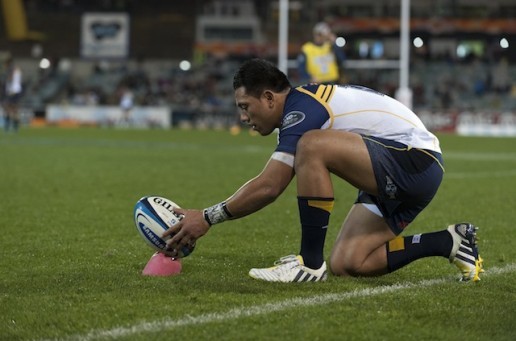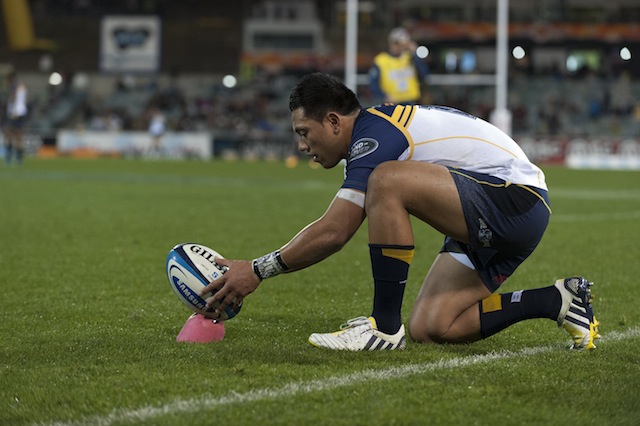So while it may be difficult to emulate the feats of an International Rugby Kicker and their well developed technique, I ask you to consider the kicking tee you are using and how it may affect your performance….
As a Specialist Rugby Kicking Coach I am surprised that rarely I am asked by players or coaches about Kicking Tee suitability. When it comes to the subject of place kicking, this often overlooked element or variable has the potential to be career changing. Yes, I did just say that.
Of course, it certainly isn’t as simple as merely changing tees to improve results. Many articles have been written on the subject of ‘place kick instruction’, with very few, in my opinion, outlining important principles of kicking tee suitability. You see, I’m not necessarily referring to which brand of tee, but rather the consideration of what style of tee to make your best friend. For all the investment of time and energy in developing and correcting technique, much care and consideration should be taken when choosing which tee will deliver yours, or your players best work.
This has saved me (and many players) much effort as it can be much easier to change a tee than it is to make mechanical adjustments!
I believe coaches need to take into account all variables when seeking technical improvement. Often our equipment is overlooked in the process and can actually make your job easier. You may even end up where you started with some players, but at least that’s a box ticked in your process.
Personally, I like to leave no stone unturned in the pursuit of improved learning, development and performance…….
It is common, particularly for junior players, to kick with the same tee that their hero does, whilst not necessarily best suited to their own kicking style. We must, as coaches, use our understanding of individual player movement sequences (mechanics) to determine which tee style will work best. By mechanics, I refer an understanding of how a player arrives at the tee and the quality of contact with the kicking foot. The essence of this article is that, although sound technique is paramount, do not ever discount the part the kicking tee plays in bringing a well structured routine together.
“Arrival” at the tee is a fundamental area for assessment of kicking tee suitability. After all, we are predominantly concerned with the “ball presentation” and its relationship to 1. Leg Swing Plane and 2. Chest/Hip/Foot Angle at Heel Strike. A player’s height and boot size may also play a part in the equation also……
What does this actually mean?
Ask yourself, “Does the height & angle of ball on the tee allow for optimal contact based on how I kick naturally?” Ball height really just means “sweet spot” height at the end of the day.
Among the main considerations in setting a ball correctly on the tee are 1. Set Height and 2. Launch Angle. Both of these inter-related factors are in control of the kicking foot’s access to the sweet spot at impact. I acknowledge, as many of my players prefer to do, that some have a preference to tilt the ball left or right. For the purpose of this article I assume the ball is set pointed at the target.
It’s important to know that any manipulation of the above mentioned factors effectively moves the sweet spot, even if only by a small amount. It is here that lies the powerful concept of having to understand this.
Which kicking tee then?
That’s up to you ultimately, but here’s a brief run down on the choices of Christian & Aaron and their specs:
Low Set

T ee Height (lowest end): Approx 6cm. Almost solely the choice of Rugby Union players, particularly in the Northern Hemisphere. Low clearance with some allowance to tilt left or right. The better options have some grip for stable ball placement. An upright Launch Angle (suits up to 80+ degrees). Small margin for error with this tee.
ee Height (lowest end): Approx 6cm. Almost solely the choice of Rugby Union players, particularly in the Northern Hemisphere. Low clearance with some allowance to tilt left or right. The better options have some grip for stable ball placement. An upright Launch Angle (suits up to 80+ degrees). Small margin for error with this tee.
The low (almost none) clearance is a challenge for many kickers. The key with this is of course to strike a little way up from the bottom point of the ball to clear the ground with your kicking foot. Many players strike too low, thus missing the ideal impact point and risk kicking the ground. The ball flight of a kick struck too low will often have a high spin frequency, but lack power transference limiting distance.
Example: Aaron Cruden (All Blacks)
Medium Set
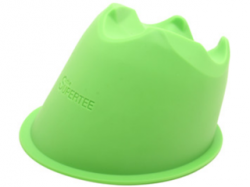
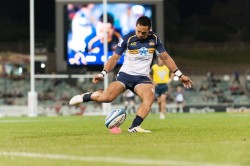 Tee Height (Lowest End): Approx 8cm. Many varieties available within this genre’. Generally they will comfortably hold a ball fixed between 55-65 degrees, but can be adjusted to suit an increased angle. A key difference is we are now introducing greater ground clearance, reducing the need for a player to have to strike so far up the ball.
Tee Height (Lowest End): Approx 8cm. Many varieties available within this genre’. Generally they will comfortably hold a ball fixed between 55-65 degrees, but can be adjusted to suit an increased angle. A key difference is we are now introducing greater ground clearance, reducing the need for a player to have to strike so far up the ball.
A common choice for Rugby League, where you will commonly observe players striking the end point of the ball (not necessarily the best location for contact, but less distance required generally in League). I have found psychological changes and execution improvements with players lacking confidence from low tees.
Example: Christian Lealiifano (Wallabies)
Telescopic
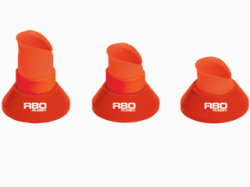

Tee Height (Lowest End): Approx 6-11cm. (Adjustable height and angle). Been around for some time now but lately gaining popularity.This style is personally my coaching favourite for incremental adjustability, particularly with junior players still finding their way. At the highest setting some incredible clearance. I appreciate that once a player has built a sound routine there is no need to play with a tee per say, but a useful tool in assisting that process! Also hugs/cups ball well which comes in very handy in light winds. These tees are generally weighted to give it stability even on less than ideal pitch surfaces. Have been known to launch rockets!
Example: Juan Martin Hernandez (Argentina Los Pumas)
So How do you know if a player needs to change their tee?
It’s important to know that all of the above tees have allowances for adjustment in launch angle, but they all vary in the height you can set the ball. It’s like a mathematical formula of bringing these two elements together to best suit the player.
My suggestion is to have a variety in your kit bag and perform a basic test with the three styles outlined above. I have no set requirements exactly, only to ensure say 3 kicks from each tee are performed from the same location on the pitch. Make some careful observations (film if you can!) of the contact quality for each. Can you improve the strike by manipulating the position of the ball to suit the player’s natural movement patterns?
This would be your starting point. And maybe you won’t need to change the tee, but if you are looking for improvement this is an element you MUST consider.
You see, we must consider all of the variables in our pursuit of player development. On many occasions this simple notion has given players that I coach a whole new positive outlook on their abilities. A kicking tee is a tool after all, so why not use one that best suits the player? Of course, this is only one element of many, but an often overlooked one in the scheme of things. There is no overall best style of tee when we consider the personal requirements of each kicker. A coaches job is to help them find the one that best suits and unlocks their potential….the results for those currently not using their ideal tee will be outstanding!
Whilst not exactly providing you a black or white pathway to success, I hope that I’ve prompted closer observation from coaches and players to consider how much effect a kicking tee has on their performance.
So next time a player brings his own tee to training, take a closer look…is it the one they should be using?
By Stuart Lierich “Specialist Kicking Coach & Consultant”

